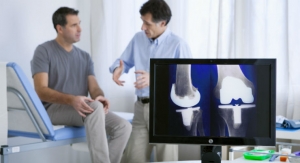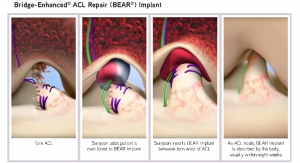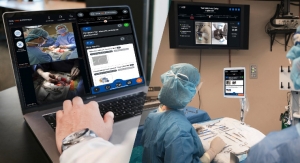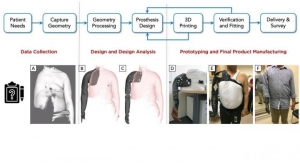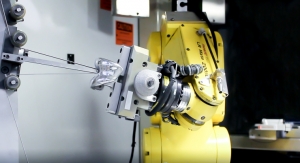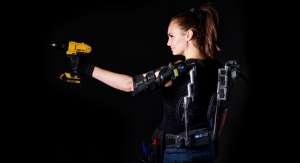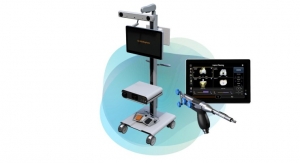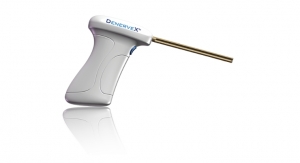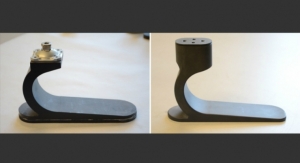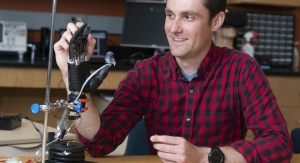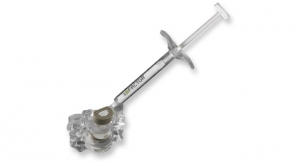Videos
Robotic Exoskeleton Lets Disabled People Eat or Drink by Themselves
Robotic Exoskeleton Lets Disabled People Eat or Drink by Themselves
The project is named “Adaptive Multimodal Interfaces to Assist Disabled People in Daily Activities” or AIDE.
By Asociacion RUVID07.09.18
Researchers of the Biomedical Neuro-engineering group of the Universidad Miguel Hernández (UMH) of Elche, Spain, have developed a worldwide pioneering robotic exoskeleton which, attached to a robotic wheelchair, helps people with varying degrees of disability carry out daily activities on their own, including eating, drinking or washing. The project, named “Adaptive Multimodal Interfaces to Assist Disabled People in Daily Activities” or AIDE, has been coordinated by UMH Systems and Automated Engineering professor Nicolás García, and financed by the European Union’s Horizon 2020 program.
The main goal of the project, which was carried out in collaboration with nine institutions and companies from Italy, Germany, Great Britain and Spain, is to contribute towards an improvement in the user-technology interface to increase the degree of self-reliance of the user. To that end, a system has been developed which includes several modules designed to help disabled people cope with their daily activities. A key element of the project is the development of a revolutionary interface that allows the user to easily and independently control the technology. Thanks to this multimodal and adaptable interface, it is possible to combine the various devices that have been developed within the AIDE project to adapt the system to the user’s needs. The artificial intelligence of the algorithms that control the AIDE system make it possible to adaptively and dynamically modify the level of assistance provided by the robotic exoskeleton according to the specific needs of the user.
Furthermore, the AIDE system will allow people with disabilities to improve communication with their family and friends through the use of services such as the Internet, e-mail, Skype, WhatsApp and social networks. It can also help improve their control over their surroundings in aspects such as turning on or off light switches, the television, make or answer a phone call, or improve the user’s accessibility to entertainment options.
The AIDE system has been evaluated by 17 people with varying degrees of disability at the Cedar Foundation in Belfast (United Kingdom) with excellent results. The project began on February 1, 2015 and was completed on May 31, 2018. Today, July 4, the official presentation of the AIDE system took place in Elche, with the user asking the exoskeleton to take him to the cafeteria, then asking for some water, and drinking it with help from the device.
Currently, the main trend in the development of assistance technology to help with activities of daily living (ADLs) such as mobility or communicating is geared towards merging the user’s capabilities with the assistance technologies. However, assistance devices that are currently available do not make for a real and effective merger for users with different capabilities, and among the assistance technologies there are no robotic exoskeletons that enable the user to interact with their surroundings and carry out certain tasks by themselves.
Approximately 80 million people in the EU (a sixth of the entire population) have some sort of disability. This typically entails a series of physical, psychological and social barriers that hamper their participation in social and economic activities. According to article 9 of the United Nations Convention on the rights of people with disability, signed by the European Commission in 2010, “accessibility” is a basic right for all people with disability. The objective of accessibility is to enable people with disability to live independently and take part in all aspects of life.
The main goal of the project, which was carried out in collaboration with nine institutions and companies from Italy, Germany, Great Britain and Spain, is to contribute towards an improvement in the user-technology interface to increase the degree of self-reliance of the user. To that end, a system has been developed which includes several modules designed to help disabled people cope with their daily activities. A key element of the project is the development of a revolutionary interface that allows the user to easily and independently control the technology. Thanks to this multimodal and adaptable interface, it is possible to combine the various devices that have been developed within the AIDE project to adapt the system to the user’s needs. The artificial intelligence of the algorithms that control the AIDE system make it possible to adaptively and dynamically modify the level of assistance provided by the robotic exoskeleton according to the specific needs of the user.
Furthermore, the AIDE system will allow people with disabilities to improve communication with their family and friends through the use of services such as the Internet, e-mail, Skype, WhatsApp and social networks. It can also help improve their control over their surroundings in aspects such as turning on or off light switches, the television, make or answer a phone call, or improve the user’s accessibility to entertainment options.
The AIDE system has been evaluated by 17 people with varying degrees of disability at the Cedar Foundation in Belfast (United Kingdom) with excellent results. The project began on February 1, 2015 and was completed on May 31, 2018. Today, July 4, the official presentation of the AIDE system took place in Elche, with the user asking the exoskeleton to take him to the cafeteria, then asking for some water, and drinking it with help from the device.
Currently, the main trend in the development of assistance technology to help with activities of daily living (ADLs) such as mobility or communicating is geared towards merging the user’s capabilities with the assistance technologies. However, assistance devices that are currently available do not make for a real and effective merger for users with different capabilities, and among the assistance technologies there are no robotic exoskeletons that enable the user to interact with their surroundings and carry out certain tasks by themselves.
Approximately 80 million people in the EU (a sixth of the entire population) have some sort of disability. This typically entails a series of physical, psychological and social barriers that hamper their participation in social and economic activities. According to article 9 of the United Nations Convention on the rights of people with disability, signed by the European Commission in 2010, “accessibility” is a basic right for all people with disability. The objective of accessibility is to enable people with disability to live independently and take part in all aspects of life.
Related Searches:



